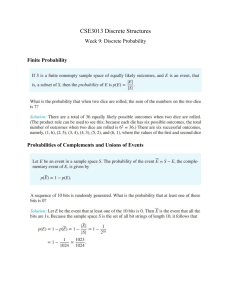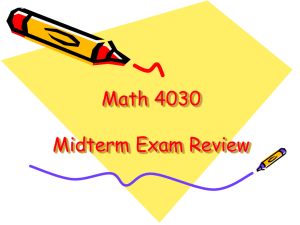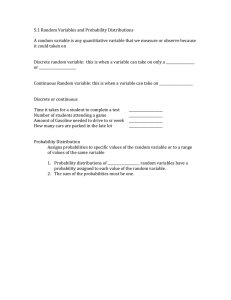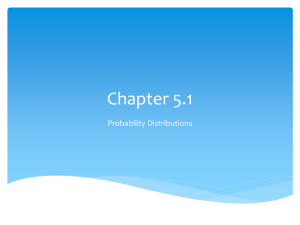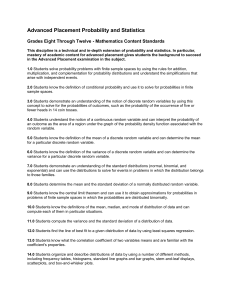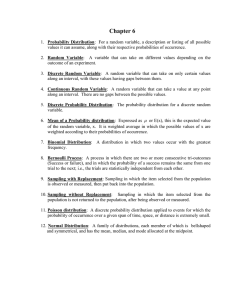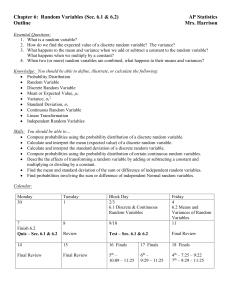Review of Probability
advertisement
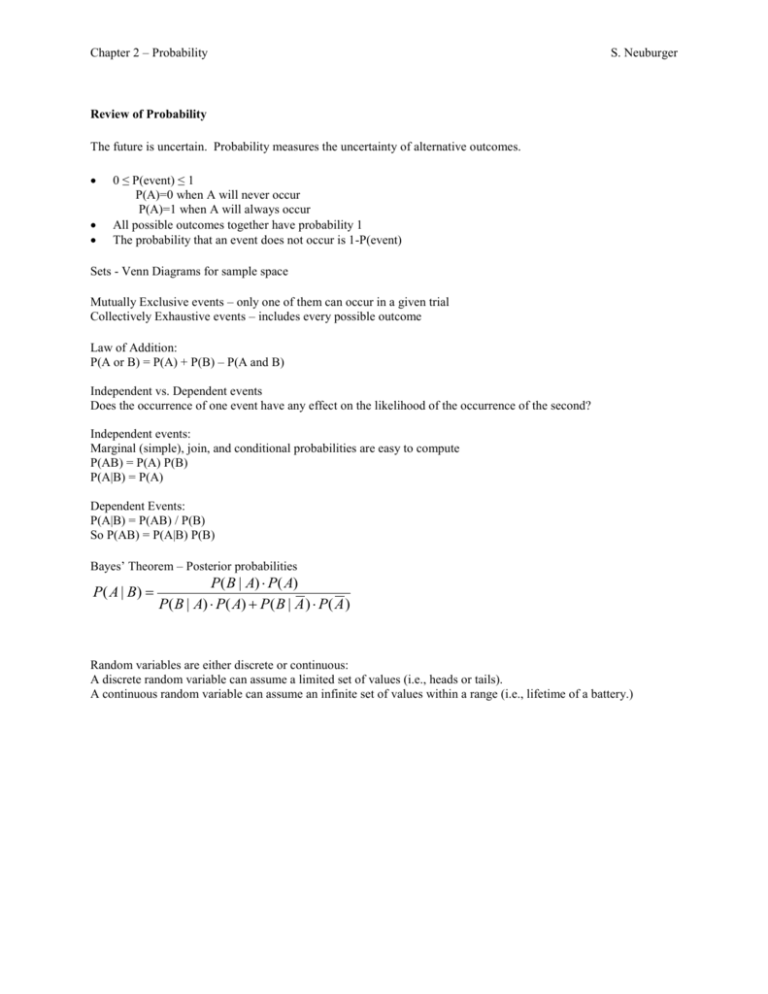
Chapter 2 – Probability S. Neuburger Review of Probability The future is uncertain. Probability measures the uncertainty of alternative outcomes. 0 ≤ P(event) ≤ 1 P(A)=0 when A will never occur P(A)=1 when A will always occur All possible outcomes together have probability 1 The probability that an event does not occur is 1-P(event) Sets - Venn Diagrams for sample space Mutually Exclusive events – only one of them can occur in a given trial Collectively Exhaustive events – includes every possible outcome Law of Addition: P(A or B) = P(A) + P(B) – P(A and B) Independent vs. Dependent events Does the occurrence of one event have any effect on the likelihood of the occurrence of the second? Independent events: Marginal (simple), join, and conditional probabilities are easy to compute P(AB) = P(A) P(B) P(A|B) = P(A) Dependent Events: P(A|B) = P(AB) / P(B) So P(AB) = P(A|B) P(B) Bayes’ Theorem – Posterior probabilities P( A | B) P( B | A) P( A) P( B | A) P( A) P( B | A ) P( A ) Random variables are either discrete or continuous: A discrete random variable can assume a limited set of values (i.e., heads or tails). A continuous random variable can assume an infinite set of values within a range (i.e., lifetime of a battery.) Chapter 2 – Probability S. Neuburger Measures of Central tendency Sample Mean X 1 n Xi n i 1 Mean (or Expected Value) n μ = E(X) = X i 1 i P( X i ) Variance reveals overall spread of distribution n σ2 = [ X i 1 i E ( X )] 2 P( X i ) Standard deviation = square root of variance 2 Probability Distributions: Binomial – only 2 possible outcomes in each independent trial (success and failure) B(n,p) where n=sample size and p=probability of success P(k) = P(k successes) = p n k k (1 p ) n k Normal – Symmetric, bell-shaped curve; many variables in real life are normally distributed and reasonable approximation for other distributions. To convert N(μ ,σ) to N(0, 1), which is the standard normal distribution use Z=(x- μ)/ σ Exponential – continuous f(x) = e x Poisson - discrete P(x) = x e x!
